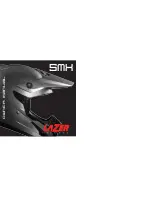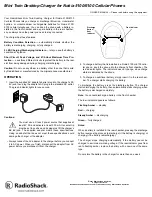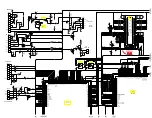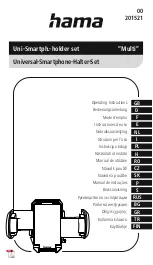
19
N100-5
3
PINLOCK
®
INNER VISOR DISASSEMBLY
3.1 Remove the visor equipped with the PINLOCK
®
inner visor (see instructions
above).
3.2 Widen the visor and release the PINLOCK
®
inner visor from the pins (Fig.10).
3.3 Release the visor.
4
MAINTENANCE AND CLEANING
-
Remove the PINLOCK
®
inner visor from the visor. Using a damp and soft cloth,
gently clean it with neutral liquid soap. Remove the soap under running water.
-
Dry the visor with dry and warm air without wiping it.
-
To keep the features of the visor in good conditions over time, let the helmet dry
in a ventilated and dry place with the visor open after use. Keep it away from heat
sources and store it in a place away from direct light.
-
Do not use solvents or chemical products.
VISION PROTECTION SYSTEM (VPS)
The exclusive inner VISION PROTECTION SYSTEM (VPS) is a LEXAN™ (*) polycar-
bonate moulded sunscreen with scratch-resistant/fog-resistant treatment. It is very
simple and practical to use: just lower it to activate it or lift it to remove it from the field
of vision. It is useful in all sorts of situations, both on long journeys out of town and
shorter town trips.
Moreover, the fastening system allows you to assemble and disassemble the sunscreen
without any tools to allow ordinary maintenance and cleaning operations.
1
VPS OPERATION
The VPS mechanism allows to activate the sunscreen by simply lowering it until it par-
tially covers the visor field of vision. In this way, the desired light transmittance reduc-
tion is achieved.
At any time, without operating the visor, the VPS can be deactivated with a simple
movement and easily lifted up to restore the normal conditions of visibility and protec-
tion guaranteed by the approved helmet visor.
1.1 To activate the VPS, move the slider as in Fig.11 until you hear a click confirming
that the VPS is in the desired position.
The VPS is adjustable in a range of intermediate positions to ensure the best
comfort for the user with respect to the terms of use.
1.2 To deactivate the VPS, press the recovery button as shown in Fig.12 until the VPS
unlocks and moves automatically in standby position.
2
PRECAUTIONS FOR USE
The current approval standards (ECE22-05) state that the visor minimum light transmit-
tance levels must be greater than 80% when riding at night and not less than 50% when
riding during the day. For this reason, under particularly bright weather conditions, e.g.
very strong sunlight caused by high intensity and/or incidence of the sunbeams, the
use of sunglasses - which entail a transmittance much lower than 50% - turns out to
be advisable, if not absolutely necessary. This in order to reduce eye fatigue on long
trips. Sunglasses also reduce the risk of direct dazzling as opposed to the use of mere
(*)
LEXAN is a trademark of SABIC.
INSTRUCTIONS FOR USE
Summary of Contents for N100-5
Page 25: ...25 N100 5 INSTRUCTIONS FOR USE...
Page 98: ...98 N100 5 design 1 1 1 1 2 1 3...
Page 99: ...99 N100 5 2 2 1 2 2 3 3 1 3 2 3 3 EL A...
Page 100: ...100 N100 5 DUAL ACTION VPS 1 1 1 1 1 2 2 1 3 3 A J J 4 2 J P 4 2 1 3 2 2 P 4 J 4 Nolangroup...
Page 108: ...108 N100 5 30 C 9 9 1 23 9 2 24 9 3 VPS 10 NOISE REDUCER Noise Reducer 10 1 Noise Reducer 25...
Page 110: ...110 N100 5 FIG ABB EIK KUVA 1 3 2 4B 4A 6 5...
Page 111: ...111 N100 5 FIG ABB EIK KUVA 7 9 8 10 12 11 14 13 D1 D2 D3 MIN MAX...
Page 112: ...112 N100 5 15 16 17 19 18 21 20 FIG ABB EIK KUVA A A A B C...
Page 113: ...113 N100 5 22 24 23 25 27 26 29 28 FIG ABB EIK KUVA...
Page 114: ...114 N100 5 Note Clipboard Notizen Notas...
Page 115: ......
















































